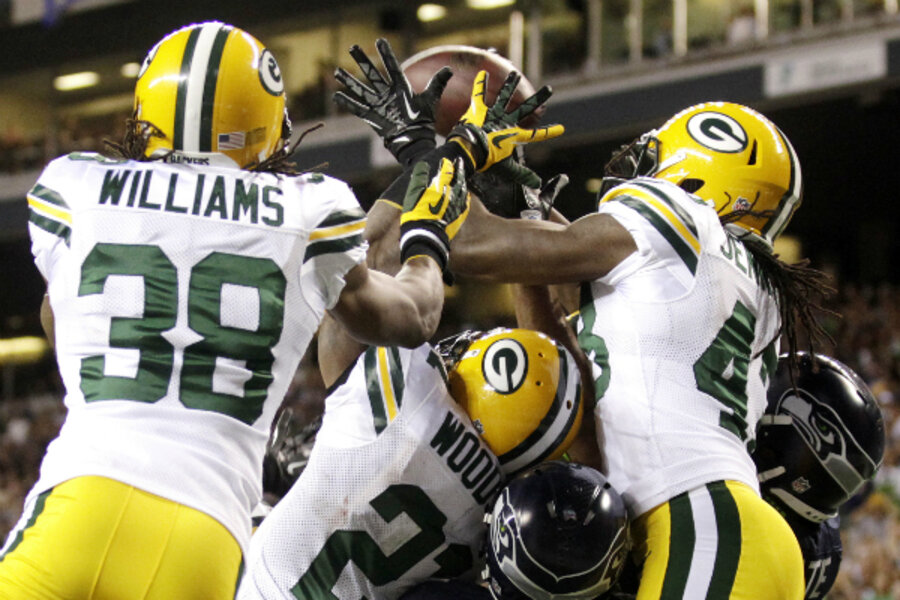In 1919, Earl “Curly” Lambeau, an original Packer player, convinced his employer, the Indian Packing Company, to buy the team uniforms and let it practice on company property. As a result, the team started off as “the Indians,” but soon switched to “Packers,” a name that caught on in local press accounts. The name made even more sense after the Atlas Packing Company took over the team as it became a charter member of the National Football League. There was some interest in 1922 in calling the team the “Big Bay Blues” because of their blue and gold uniforms, but Packers remained the more popular choice, and after a financial reorganization in 1933, the franchise officially became the Green Bay Packers, Inc. It wasn’t until 1950, however, that a decision was made to switch from blue to green jerseys, which made more sense given the city’s name.
 Mark Sappenfield
Mark Sappenfield
Dear Reader,
About a year ago, I happened upon this statement about the Monitor in the Harvard Business Review – under the charming heading of “do things that don’t interest you”:
“Many things that end up” being meaningful, writes social scientist Joseph Grenny, “have come from conference workshops, articles, or online videos that began as a chore and ended with an insight. My work in Kenya, for example, was heavily influenced by a Christian Science Monitor article I had forced myself to read 10 years earlier. Sometimes, we call things ‘boring’ simply because they lie outside the box we are currently in.”
If you were to come up with a punchline to a joke about the Monitor, that would probably be it. We’re seen as being global, fair, insightful, and perhaps a bit too earnest. We’re the bran muffin of journalism.
But you know what? We change lives. And I’m going to argue that we change lives precisely because we force open that too-small box that most human beings think they live in.
The Monitor is a peculiar little publication that’s hard for the world to figure out. We’re run by a church, but we’re not only for church members and we’re not about converting people. We’re known as being fair even as the world becomes as polarized as at any time since the newspaper’s founding in 1908.
We have a mission beyond circulation, we want to bridge divides. We’re about kicking down the door of thought everywhere and saying, “You are bigger and more capable than you realize. And we can prove it.”
If you’re looking for bran muffin journalism, you can subscribe to the Monitor for $15. You’ll get the Monitor Weekly magazine, the Monitor Daily email, and unlimited access to CSMonitor.com.






